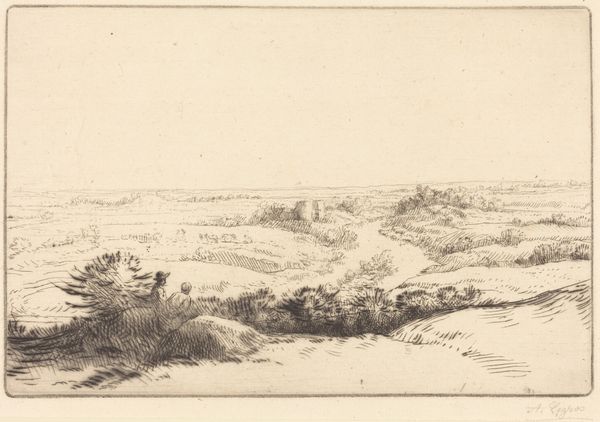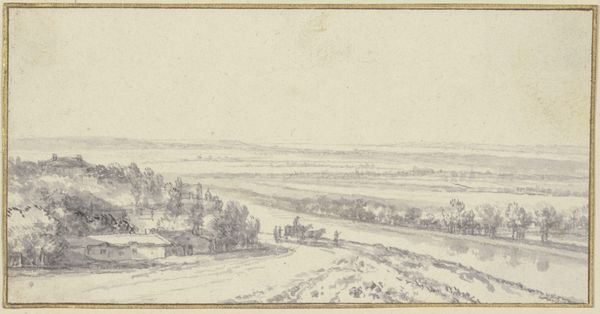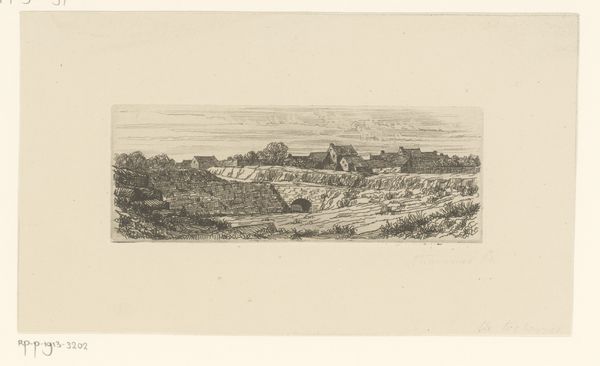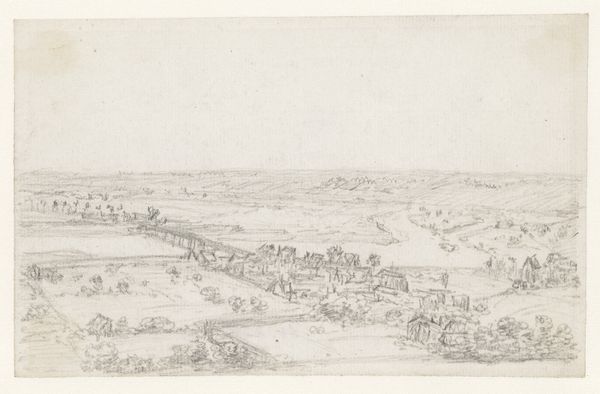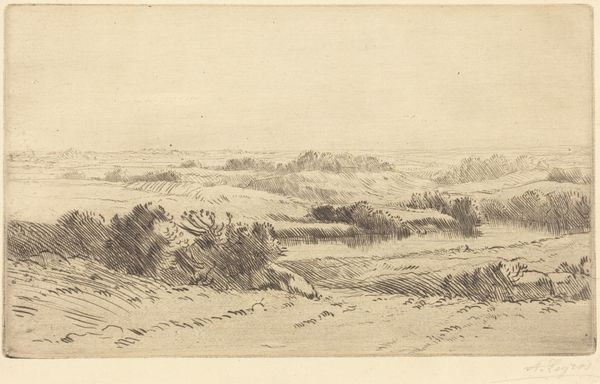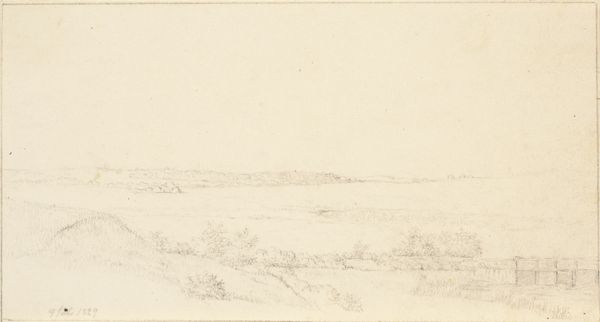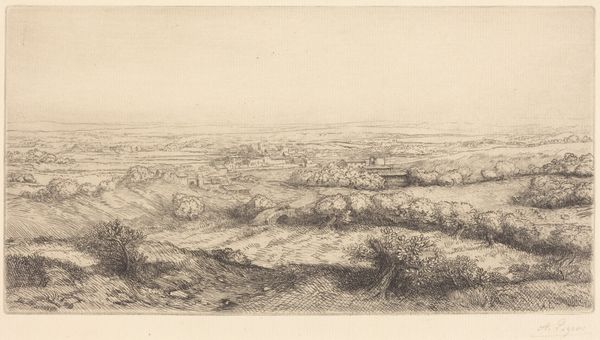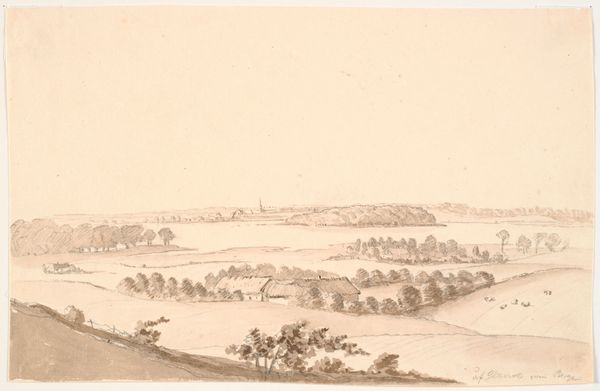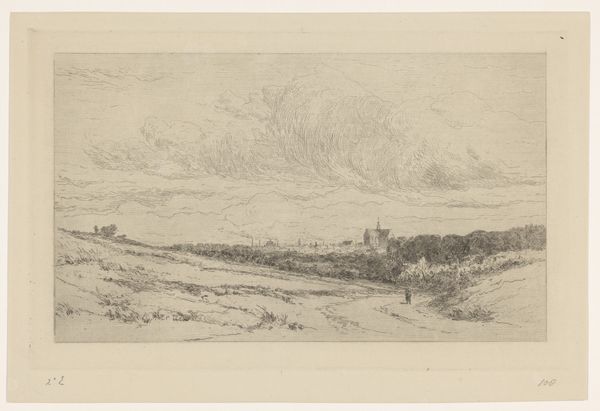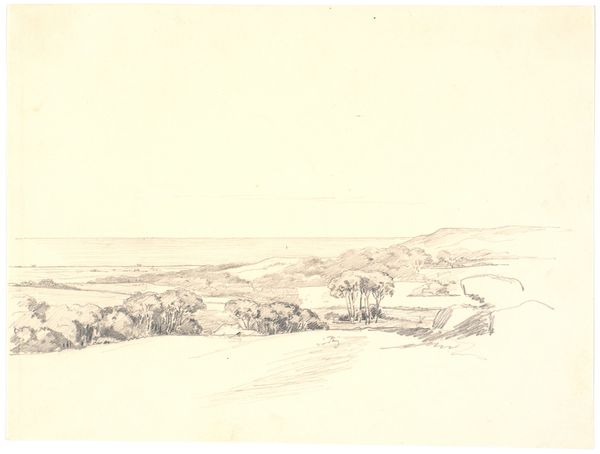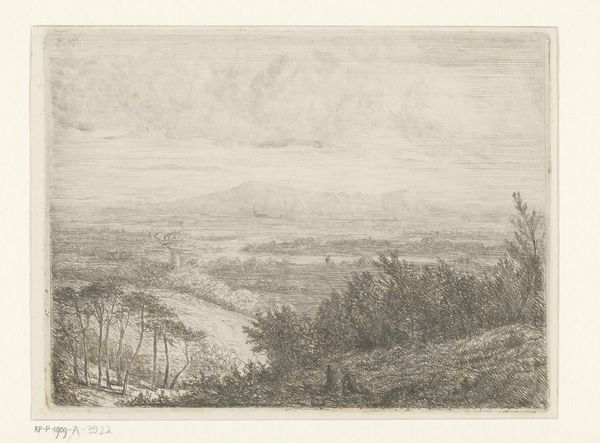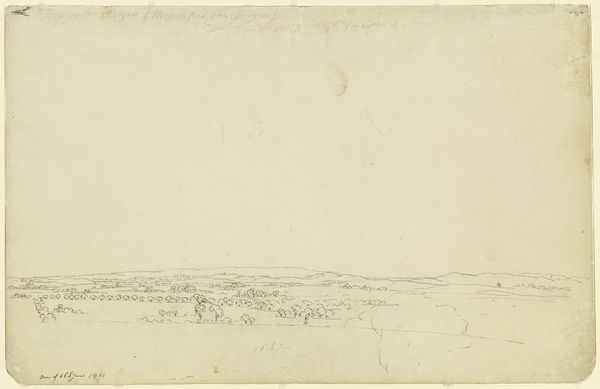
Dimensions: 143 × 228 mm (plate); 205 × 295 mm (sheet)
Copyright: Public Domain
Editor: We're looking at "The Plain Near the Lake," an etching by Alphonse Legros from around 1900. It’s a very subtle landscape. The delicate lines create a sense of distance and tranquility. What catches your eye when you look at this print? Curator: The first thing I notice is the masterful use of line. Consider how Legros uses varied line weight to create depth and texture. Observe how the foreground, etched with denser, darker lines, contrasts with the faint, almost ethereal quality of the horizon. Editor: It’s amazing how much detail he achieves with so few lines. Curator: Precisely. It's the *relationship* between those lines, the contrasts and harmonies, that build the pictorial structure. Notice, too, how the composition adheres to a structured design, despite its seeming simplicity. Is the distribution of tonal values even across the artwork? Editor: Not really. The bottom part has the stronger lines, getting progressively lighter toward the top. Curator: The strategic placement of visual weight enhances the sense of receding space and light. Through carefully controlled application, he transforms a simple subject into an intricate visual system. Do you agree the artwork gains meaning foremost from its own design? Editor: Definitely. Thinking about the use of line and tone, the formal elements really construct the scene, more than depicting any specific place. Curator: Indeed. In isolating those elements, we’ve hopefully achieved a renewed sense of this etching's aesthetic framework. Editor: I see the artwork in a fresh way after unpacking it using purely visual terms. Thanks!
Comments
No comments
Be the first to comment and join the conversation on the ultimate creative platform.

